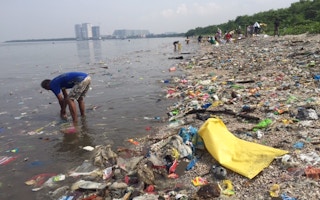A giant island of plastic floating in the Pacific Ocean holds as much as 16 times more debris than was previously thought, posing a significant threat to the food chain, scientists said on Thursday.
The so-called garbage patch in waters between California and Hawaii consists of fishing nets, plastic containers, packaging and ropes, said the Ocean Cleanup Foundation, which headed up a study published in Scientific Reports, an online journal.
The research using aerial images revealed the mass of trash is much denser—as much as 16 times more dense— than had previously been estimated, the study said.
“It’s shocking,” said Joost Dubois, a spokesman for the Netherlands-based Ocean Cleanup Foundation, which led the team of researchers from seven countries.
“
We’re basically poisoning our own food, especially for those of us relying on fish for our diet.
Joost Dubois, spokesperson, Ocean Cleanup Foundation
Nearly 200 nations late last year signed a United Nations resolution to eliminate plastic pollution in the sea, a move some hope will pave the way to a legally binding treaty.
The new research estimates the accumulation is 79,000 metric tons—1.8 trillion pieces—of plastic. Most of those pieces are tiny microplastics, it said.
In another way of describing its size, Joost said it is made up of enough trash to fill 500 jumbo jets.
The plastic has accumulated into a mass due to currents, scientists say. The research studied a patch of more than 600,000 square miles (1.6 million square kilometers) of the ocean.
A petroleum-based product, plastic disintegrates slowly, and one item pulled from the patch was about 40 years old, they said.
It harms marine life by killing creatures such as turtles and dolphins that ingest it, and it harms humans by entering the food chain in the form of microplastics, said Dubois.
“We’re basically poisoning our own food, especially for those of us relying on fish for our diet,” Dubois said.
This story was published with permission from Thomson Reuters Foundation, the charitable arm of Thomson Reuters, that covers humanitarian news, women’s rights, trafficking, property rights, climate change and resilience. Visit http://news.trust.org.










